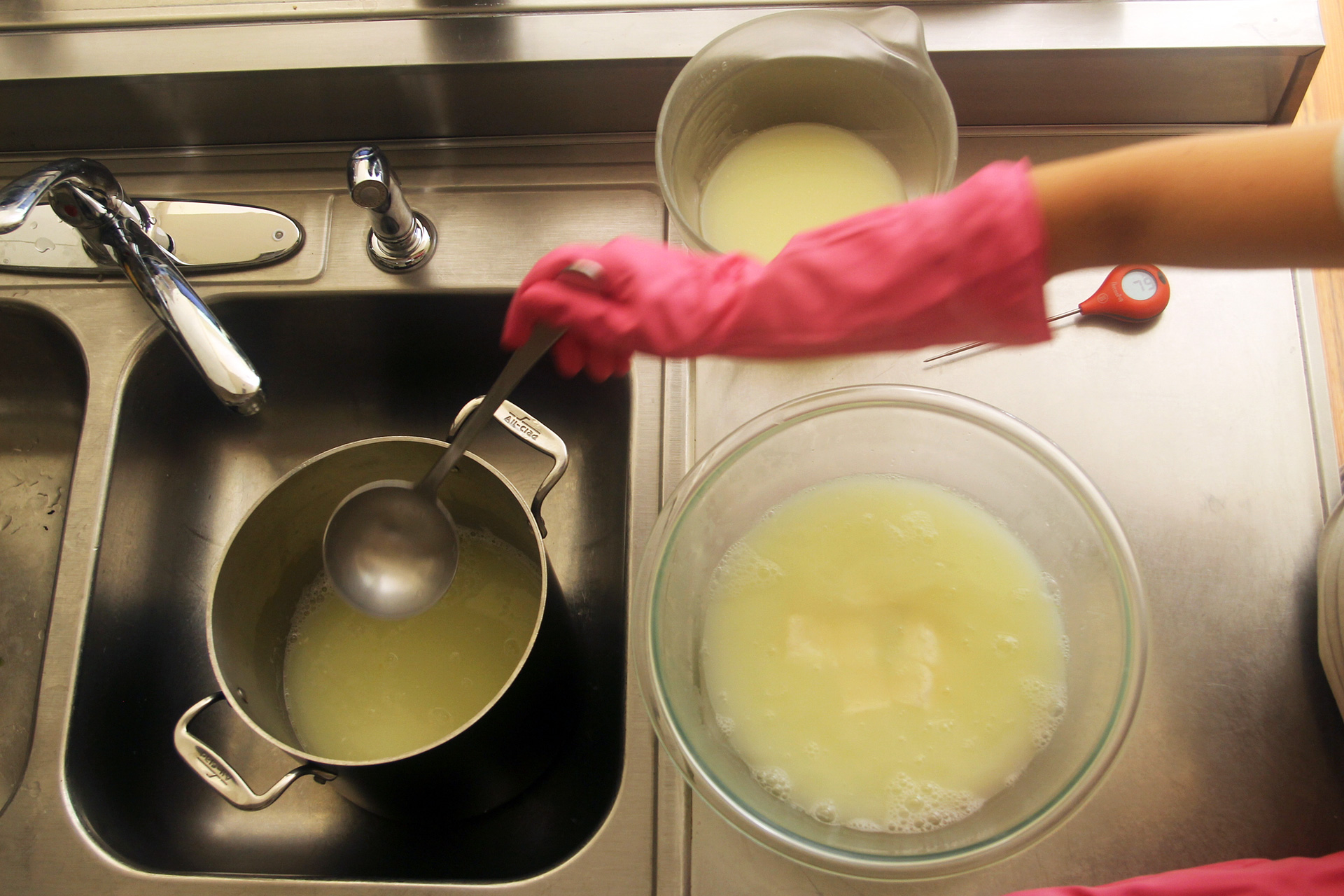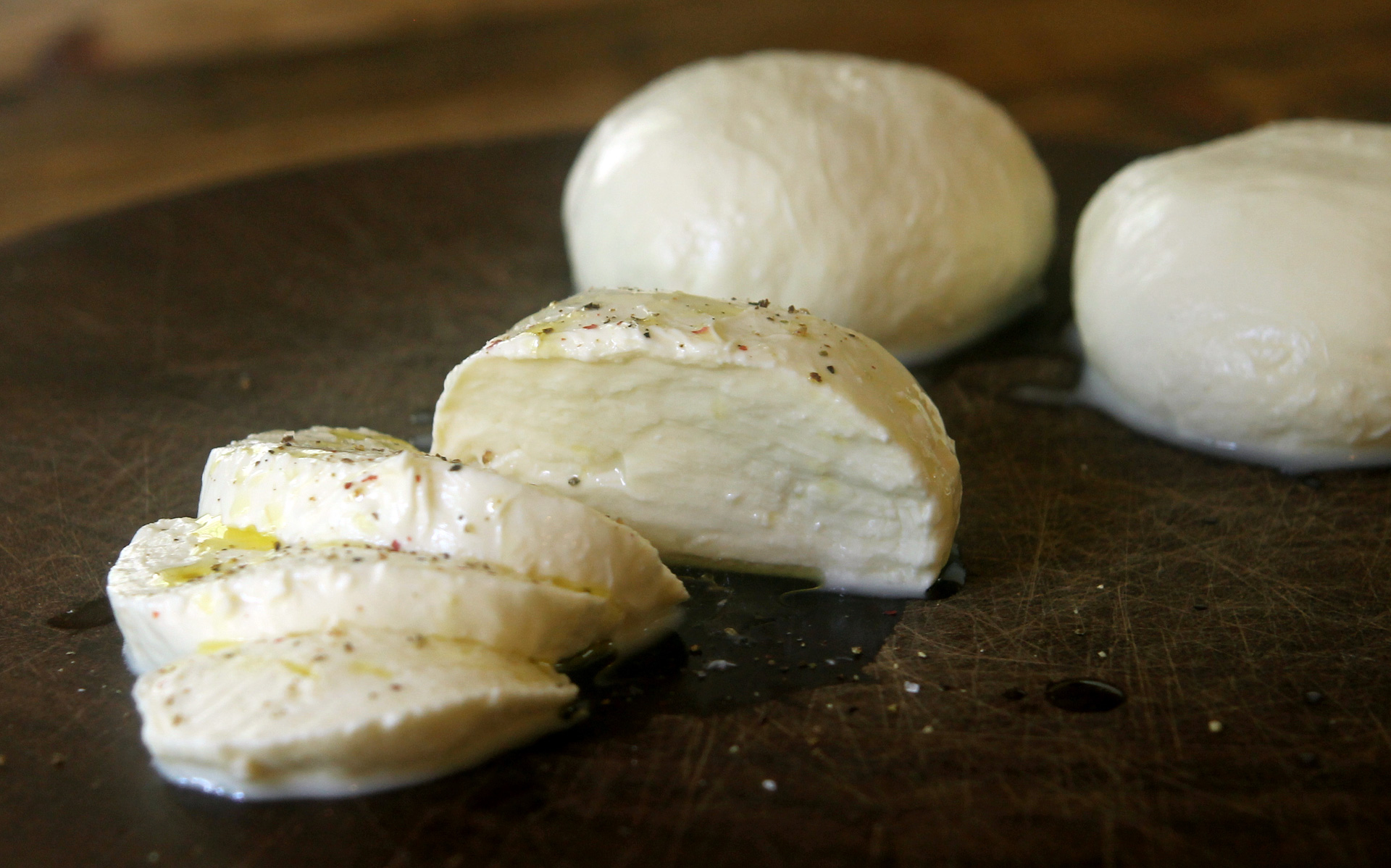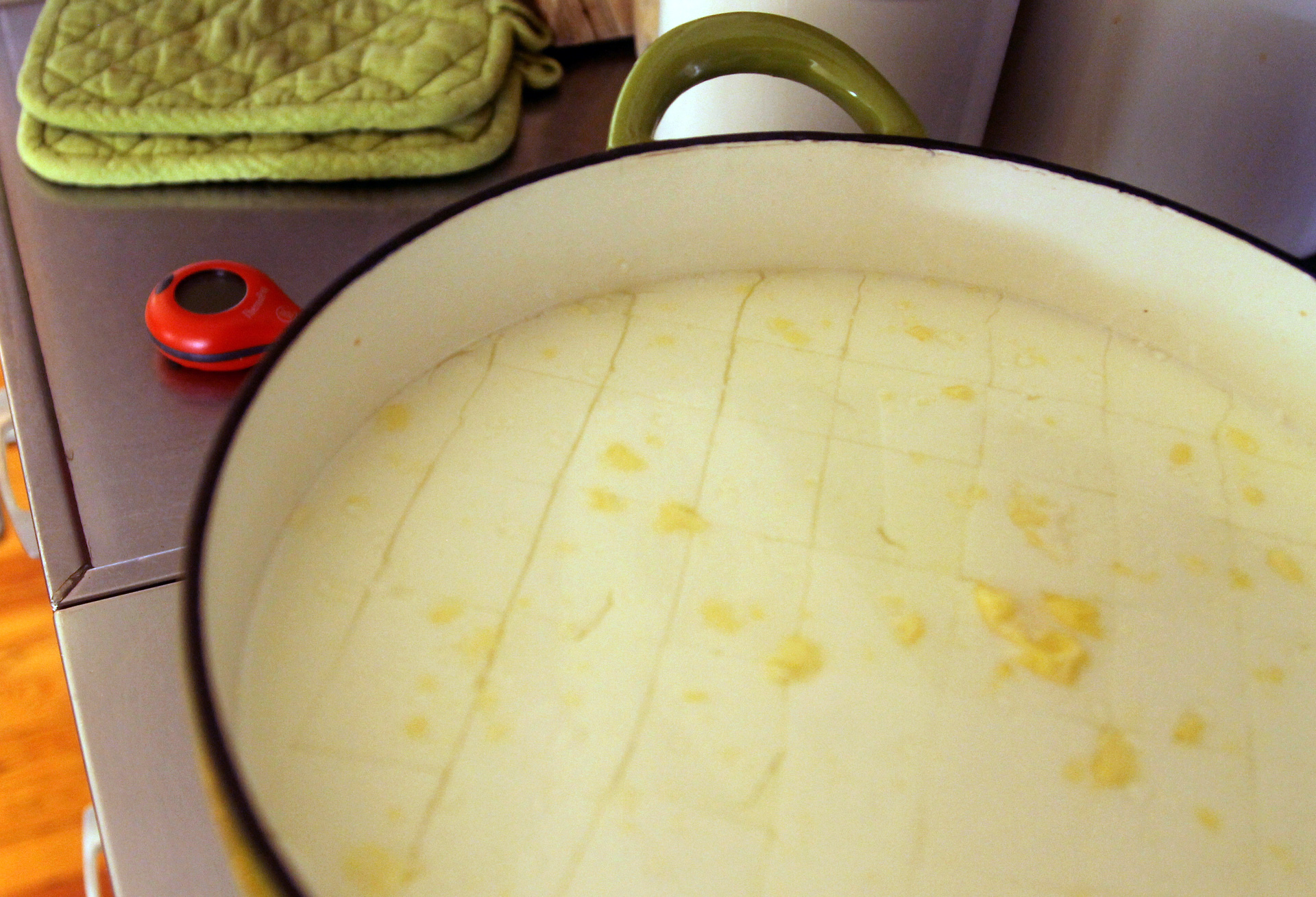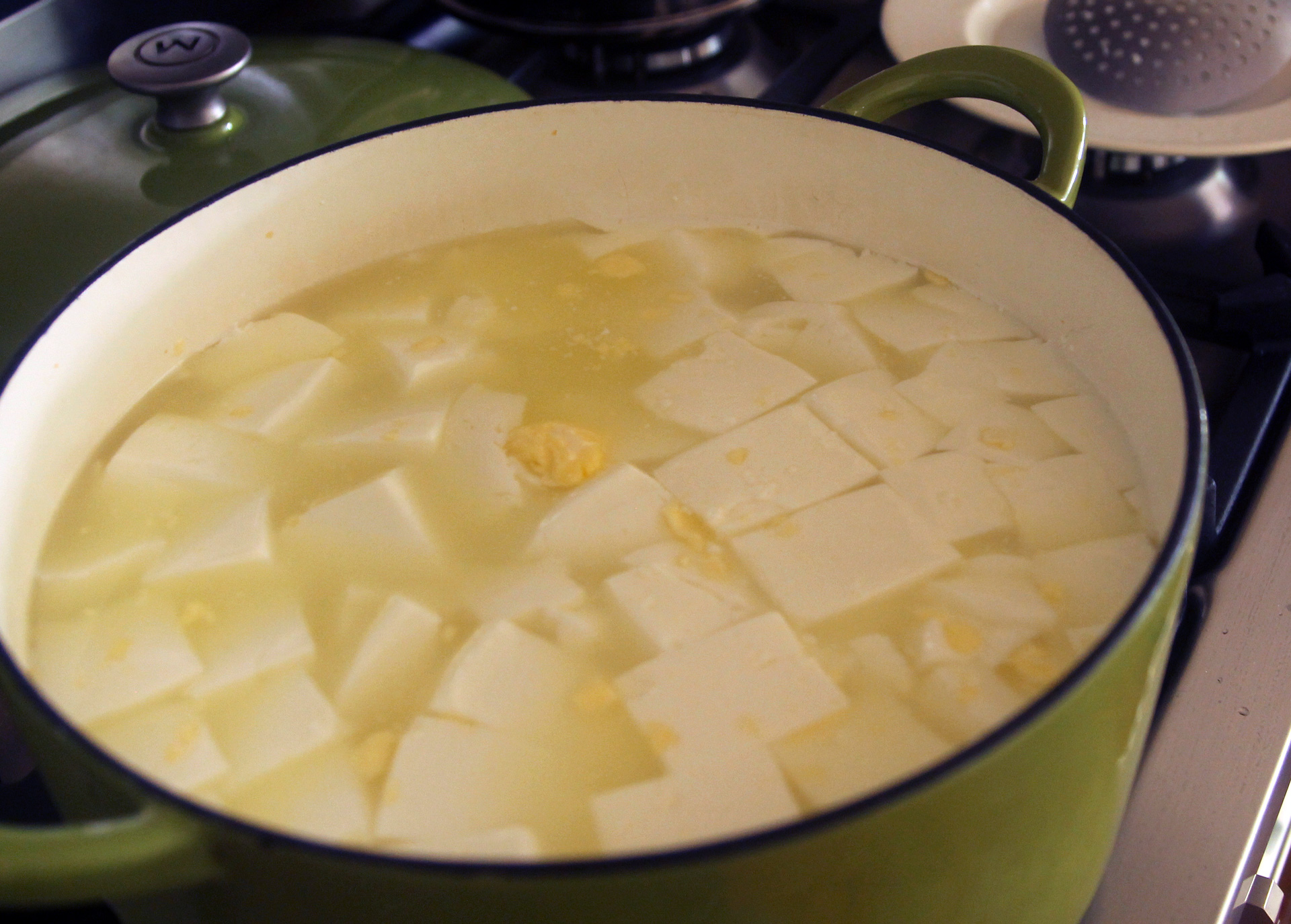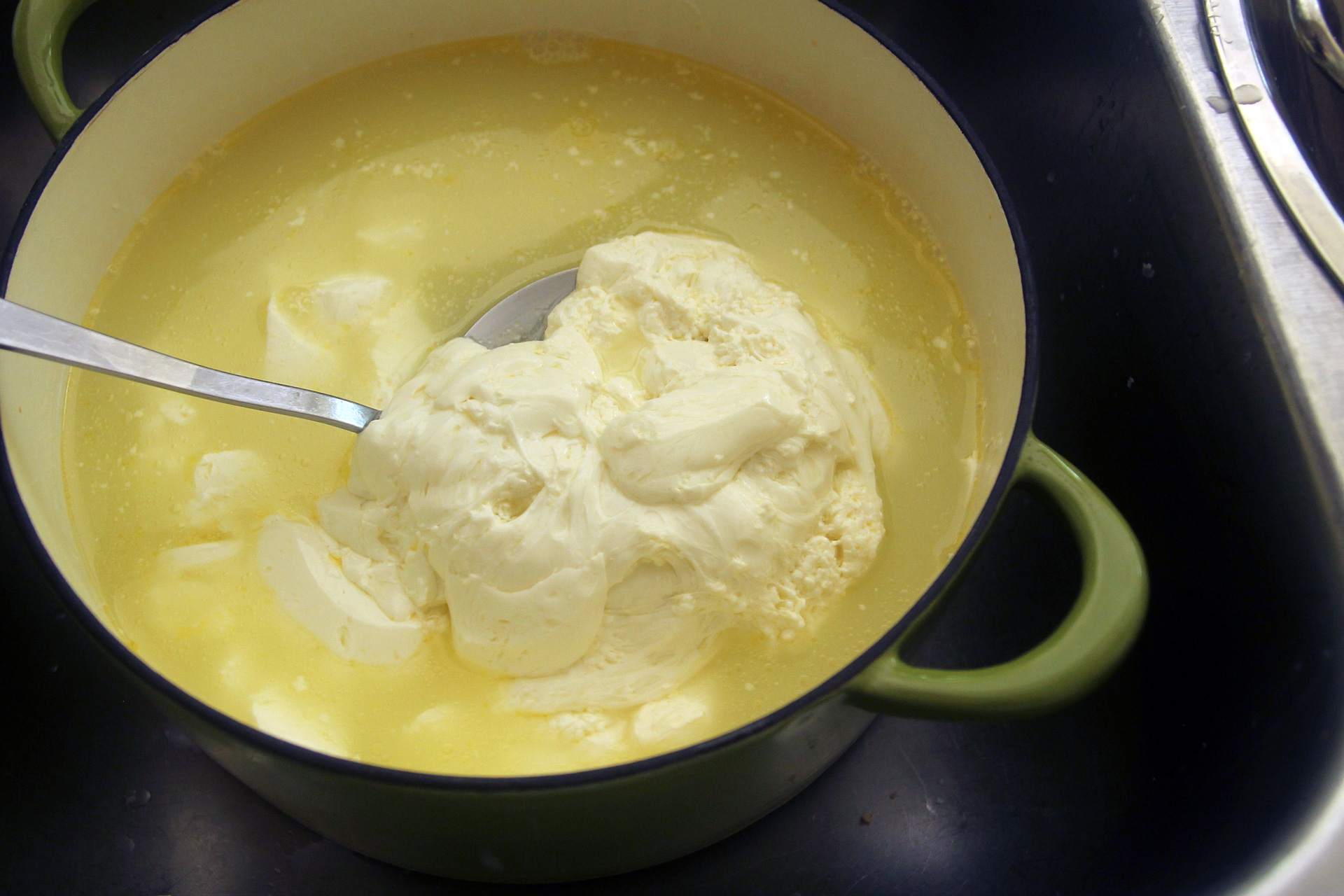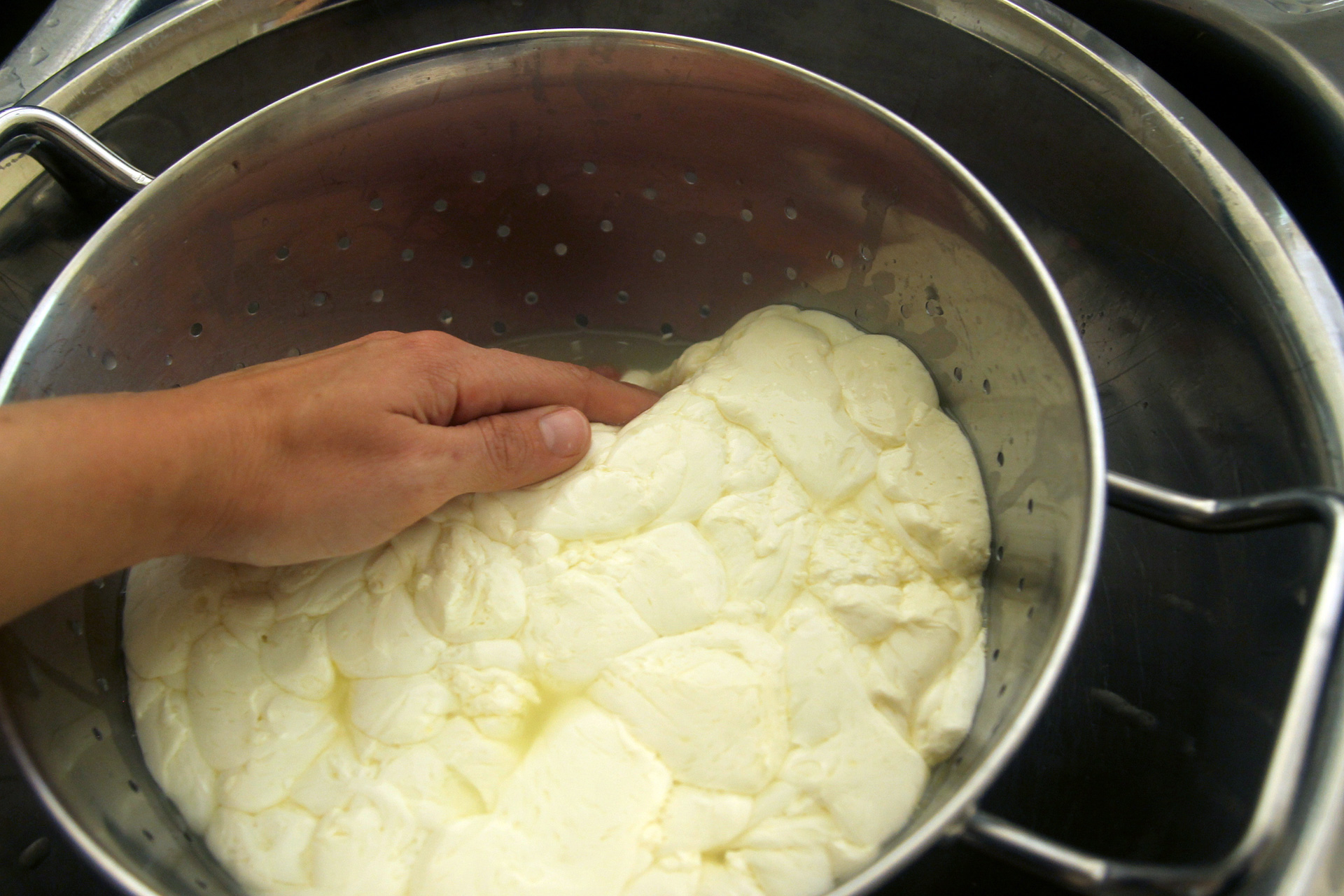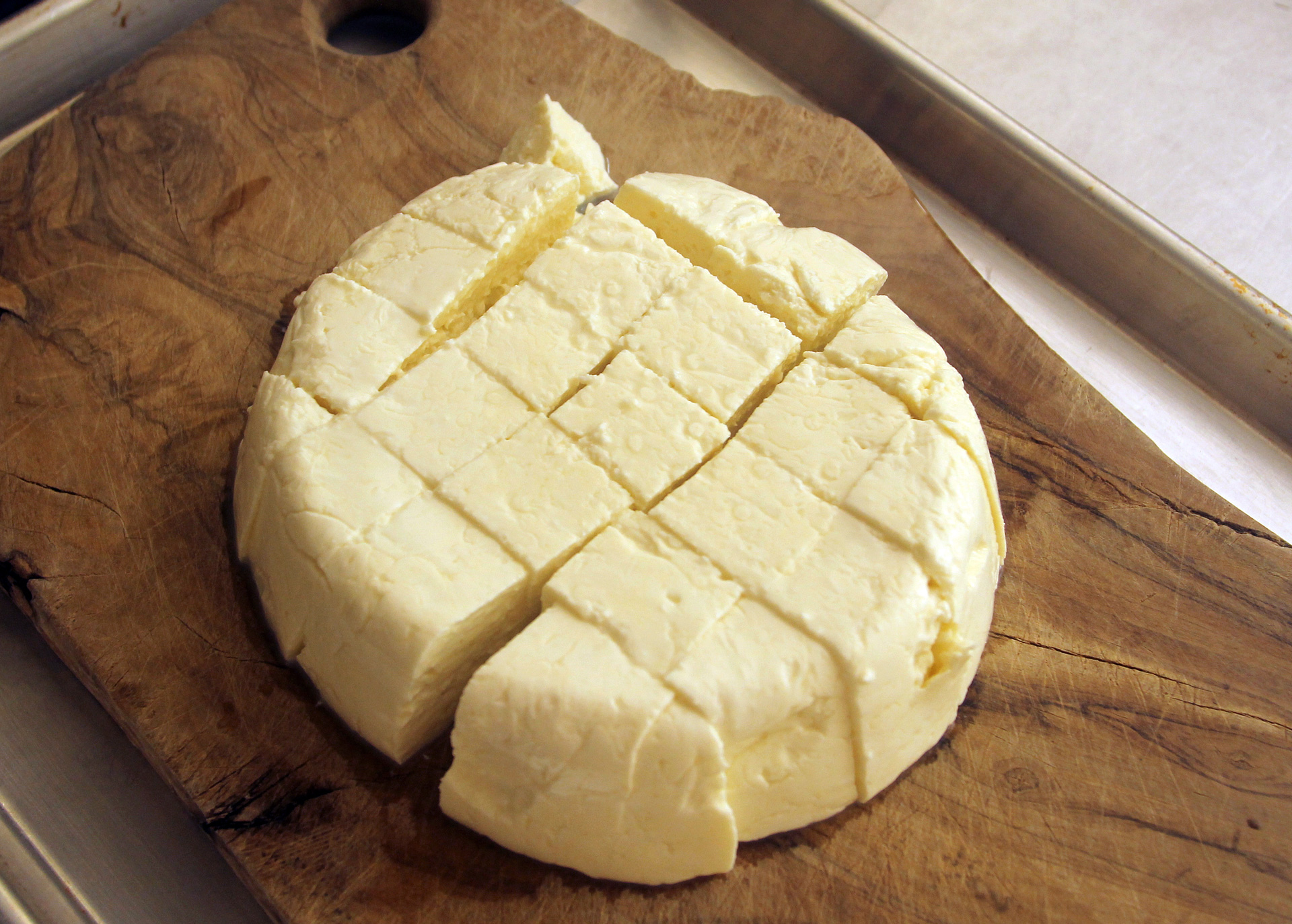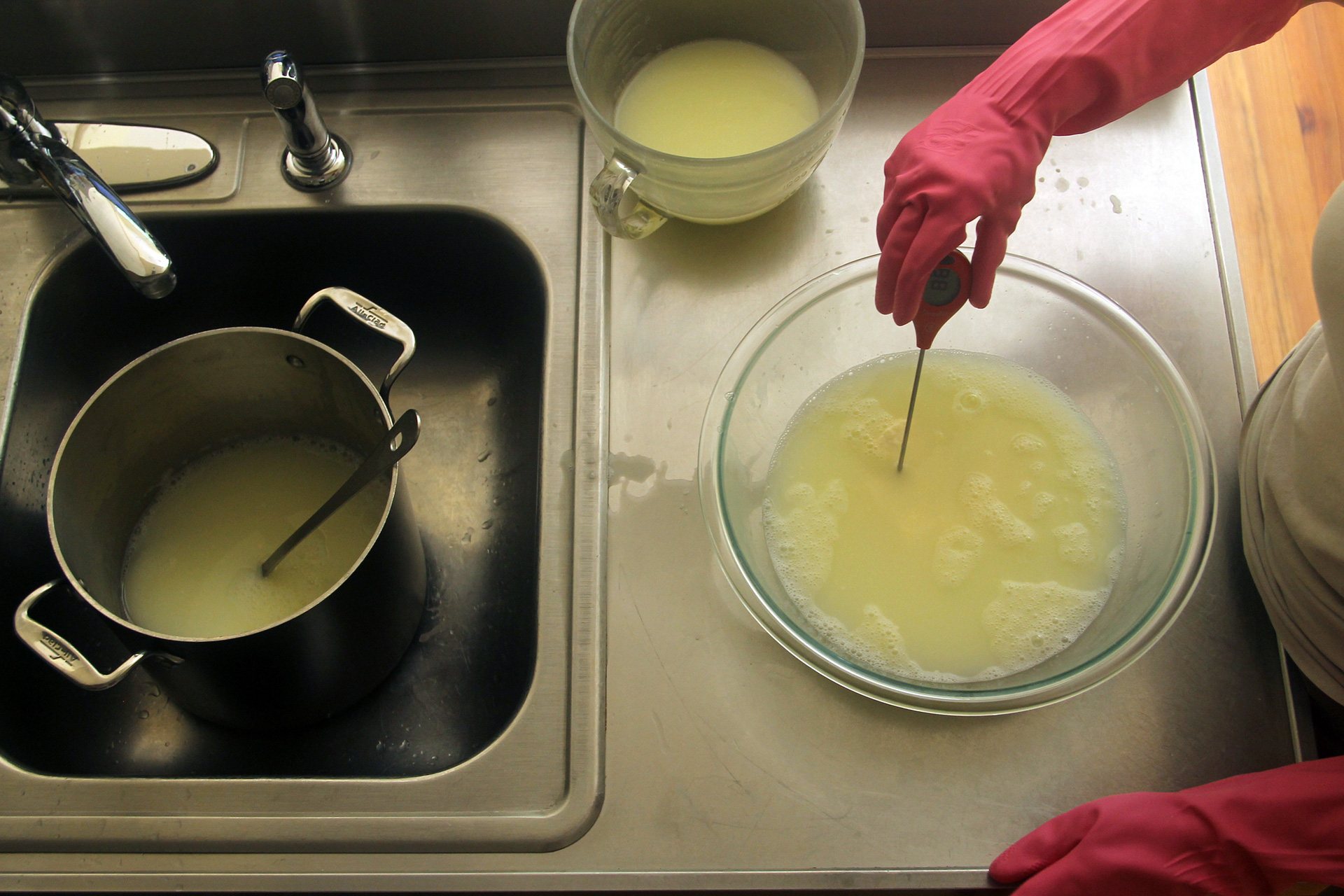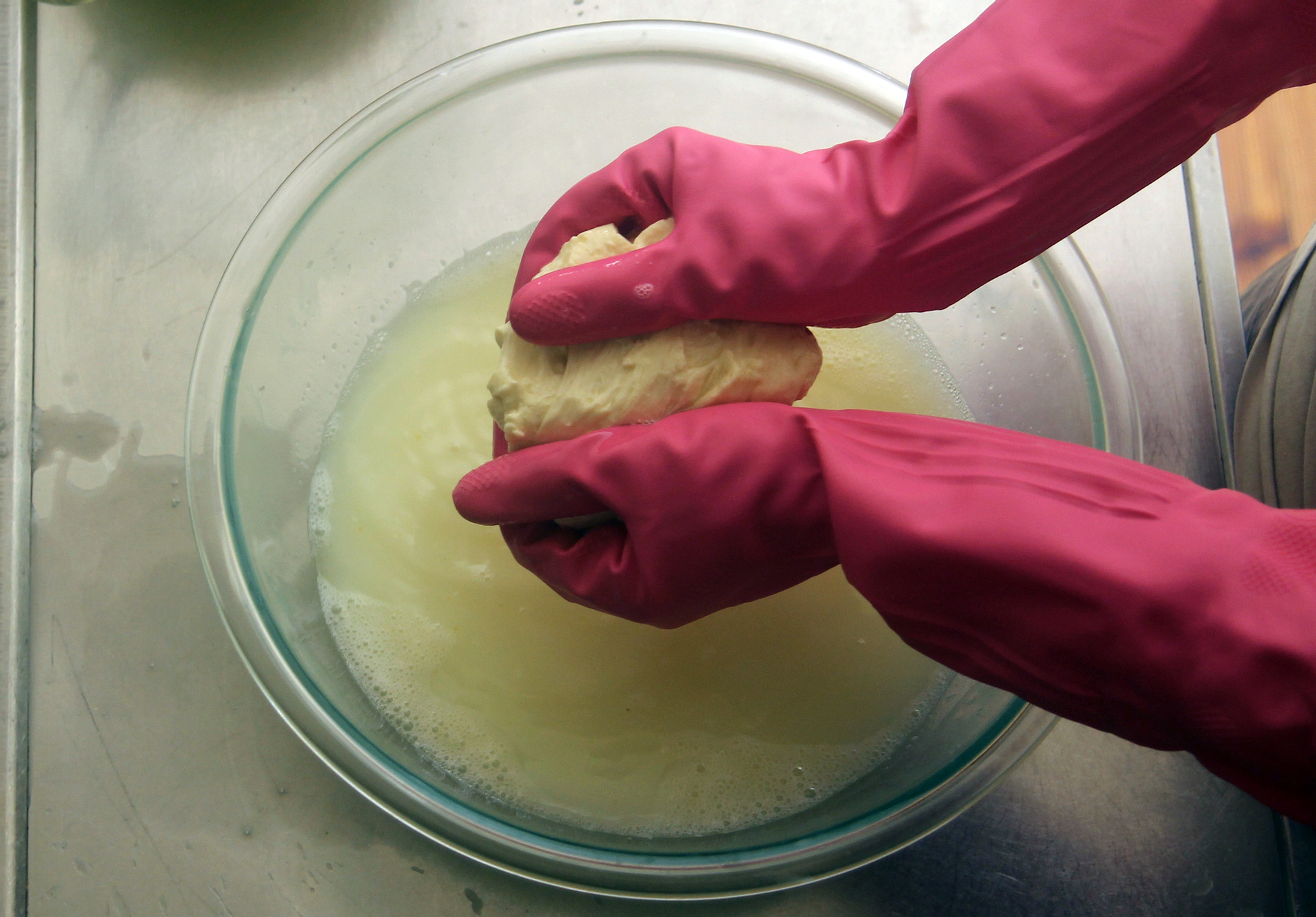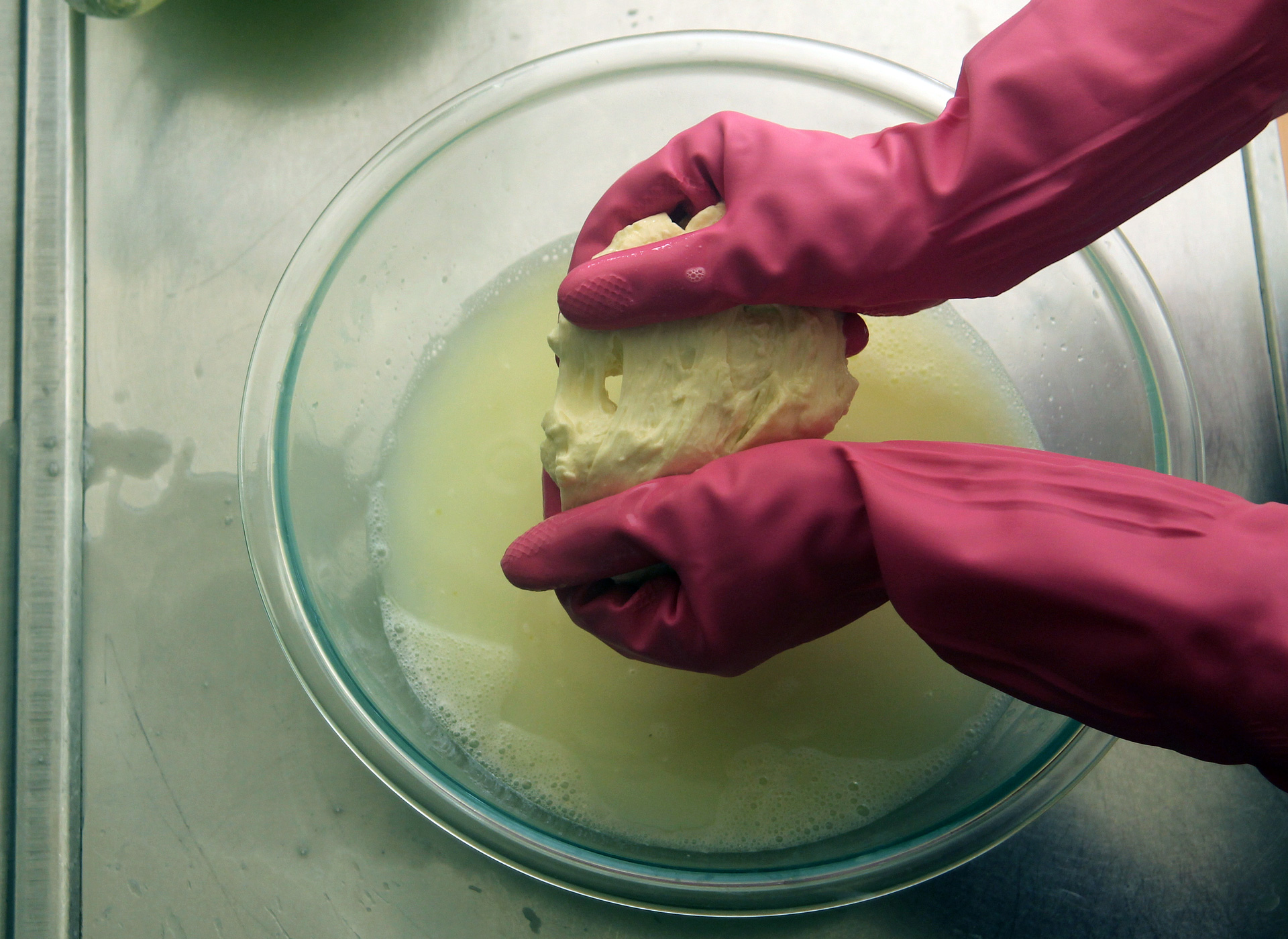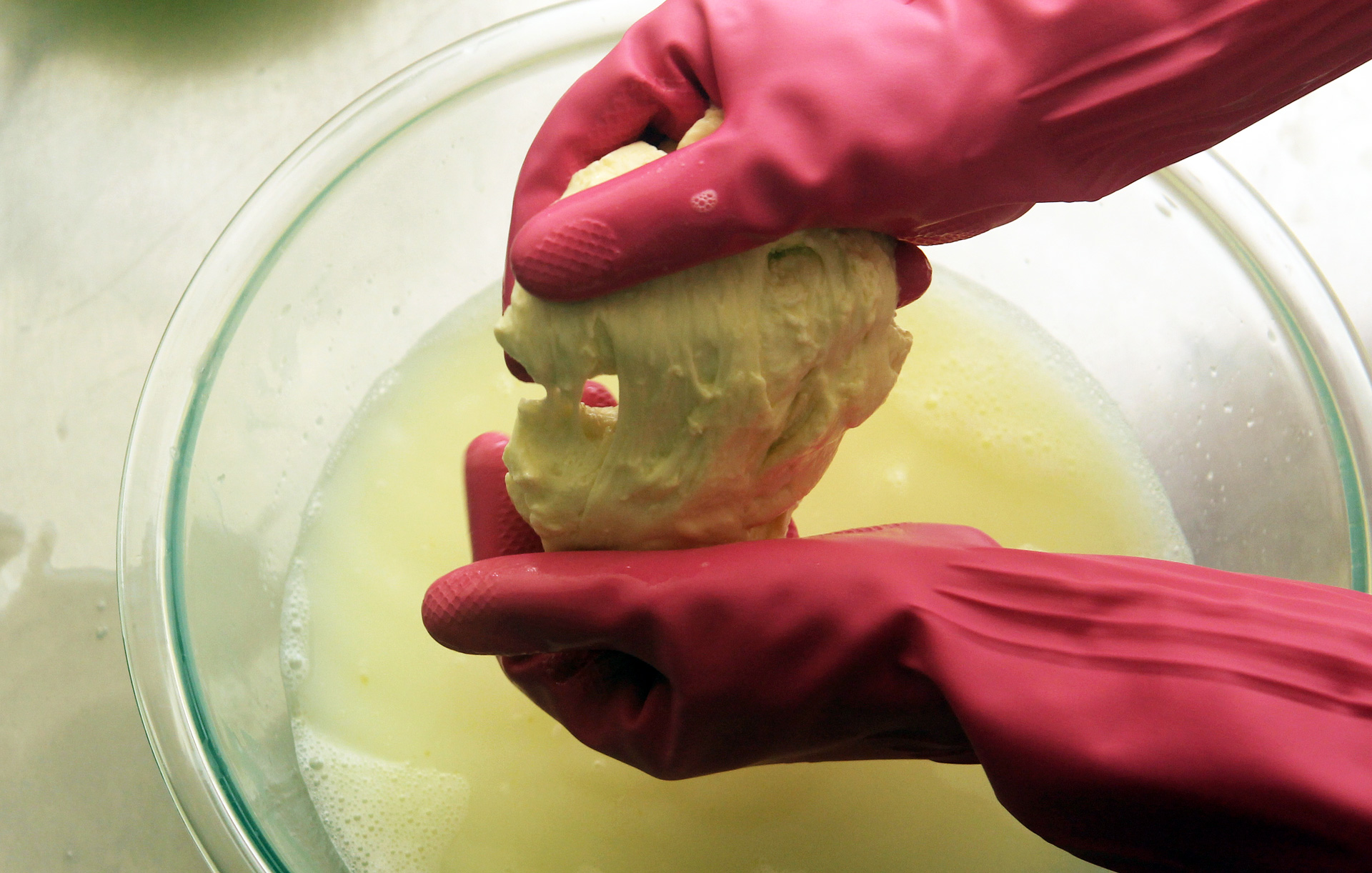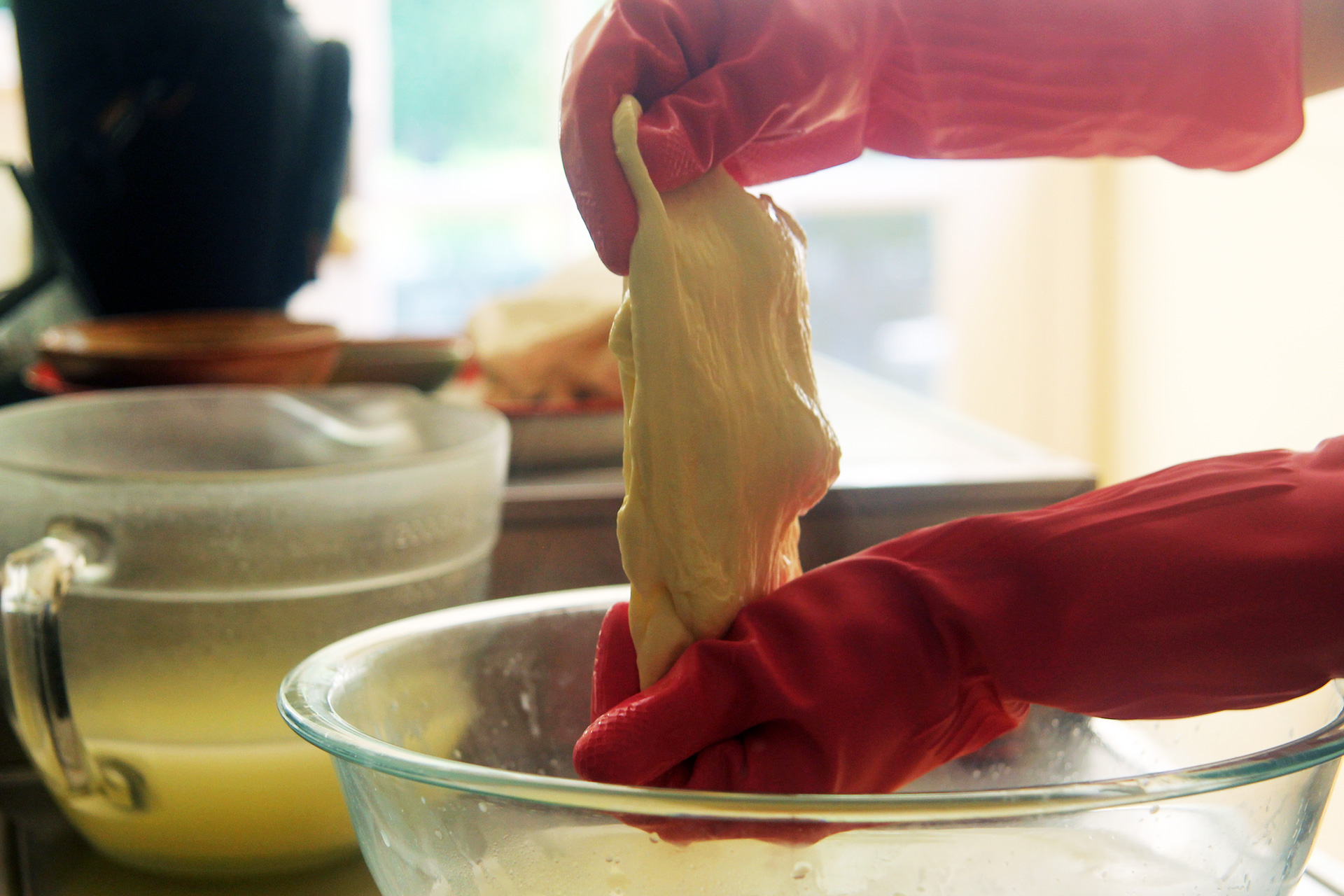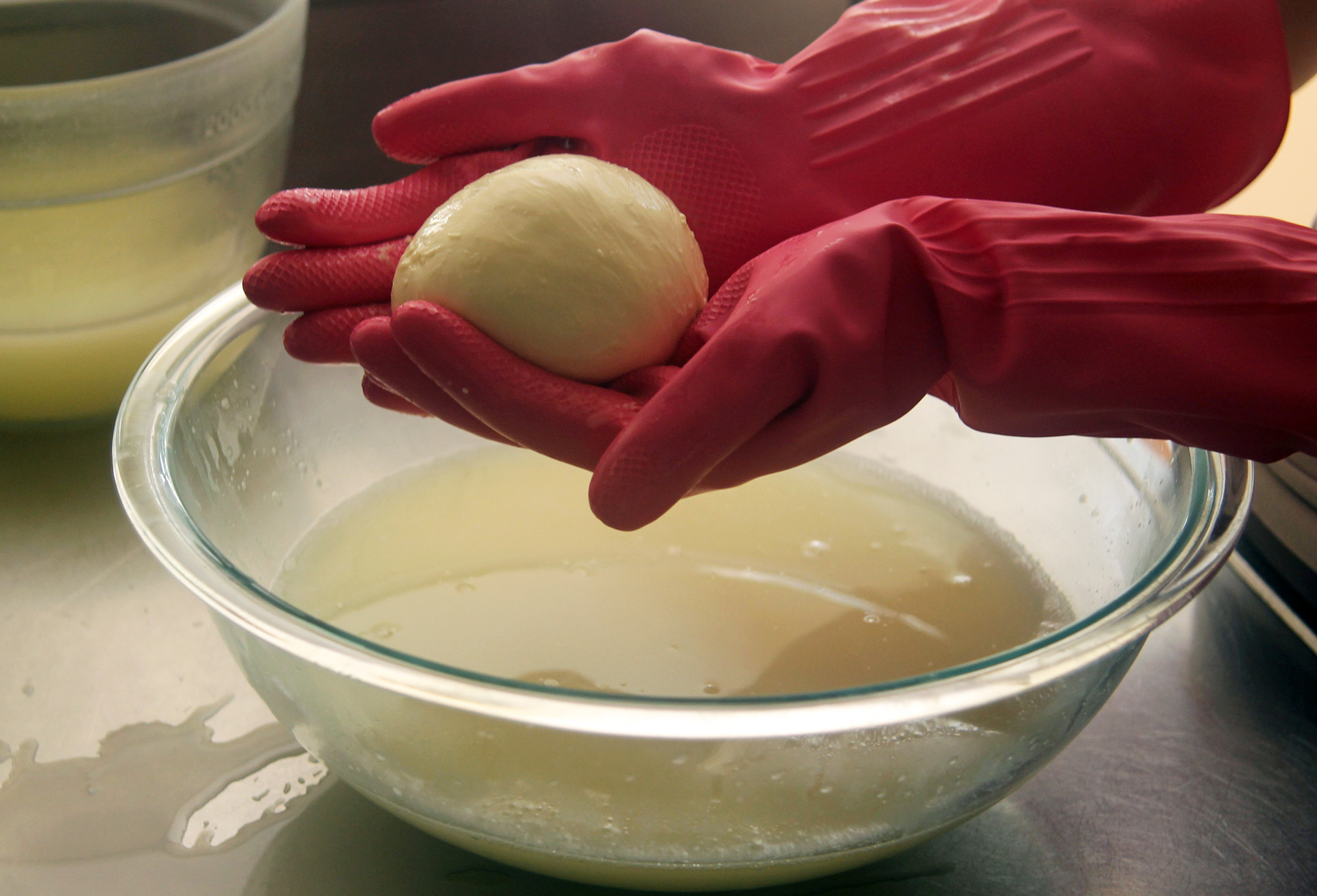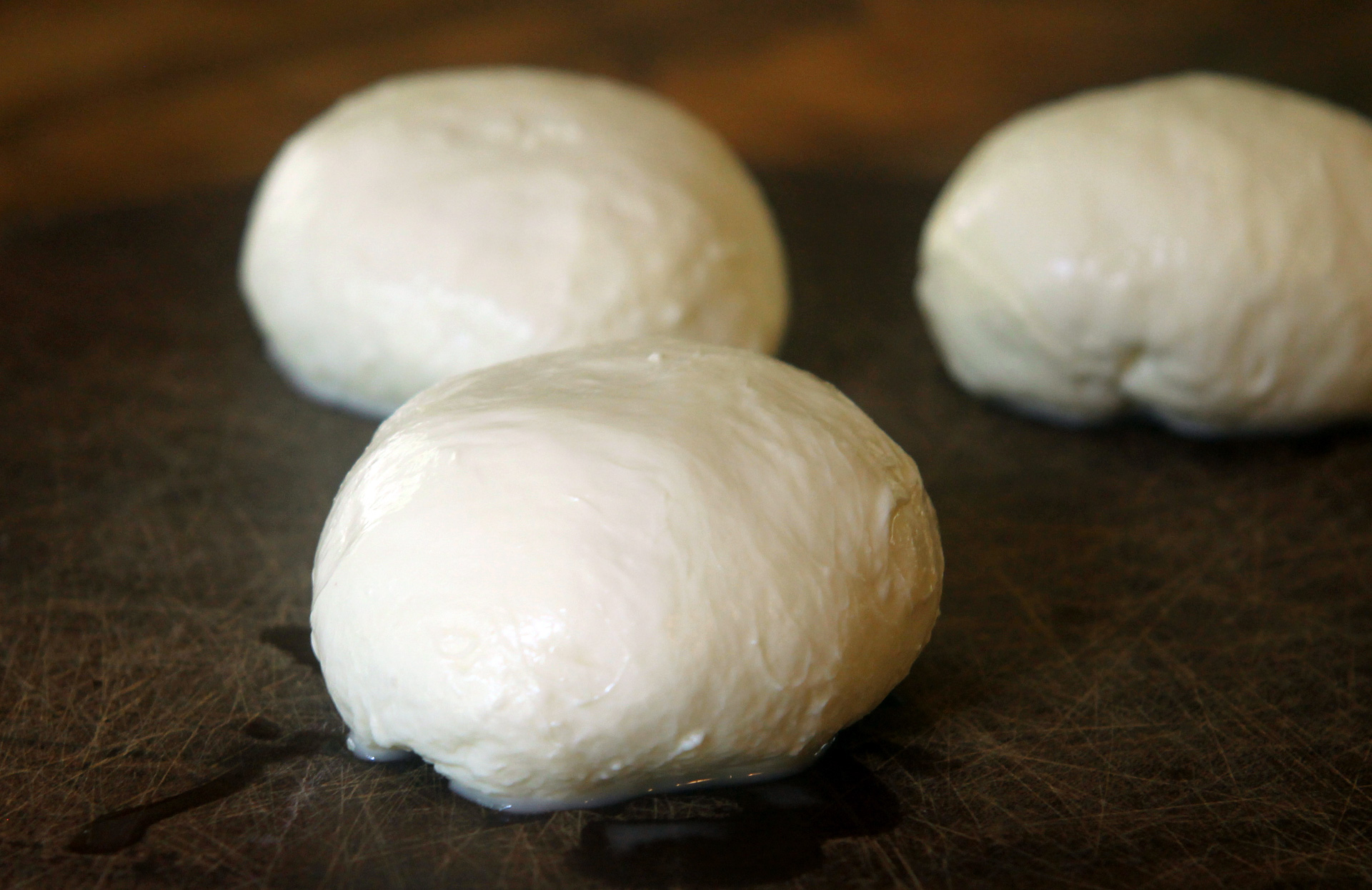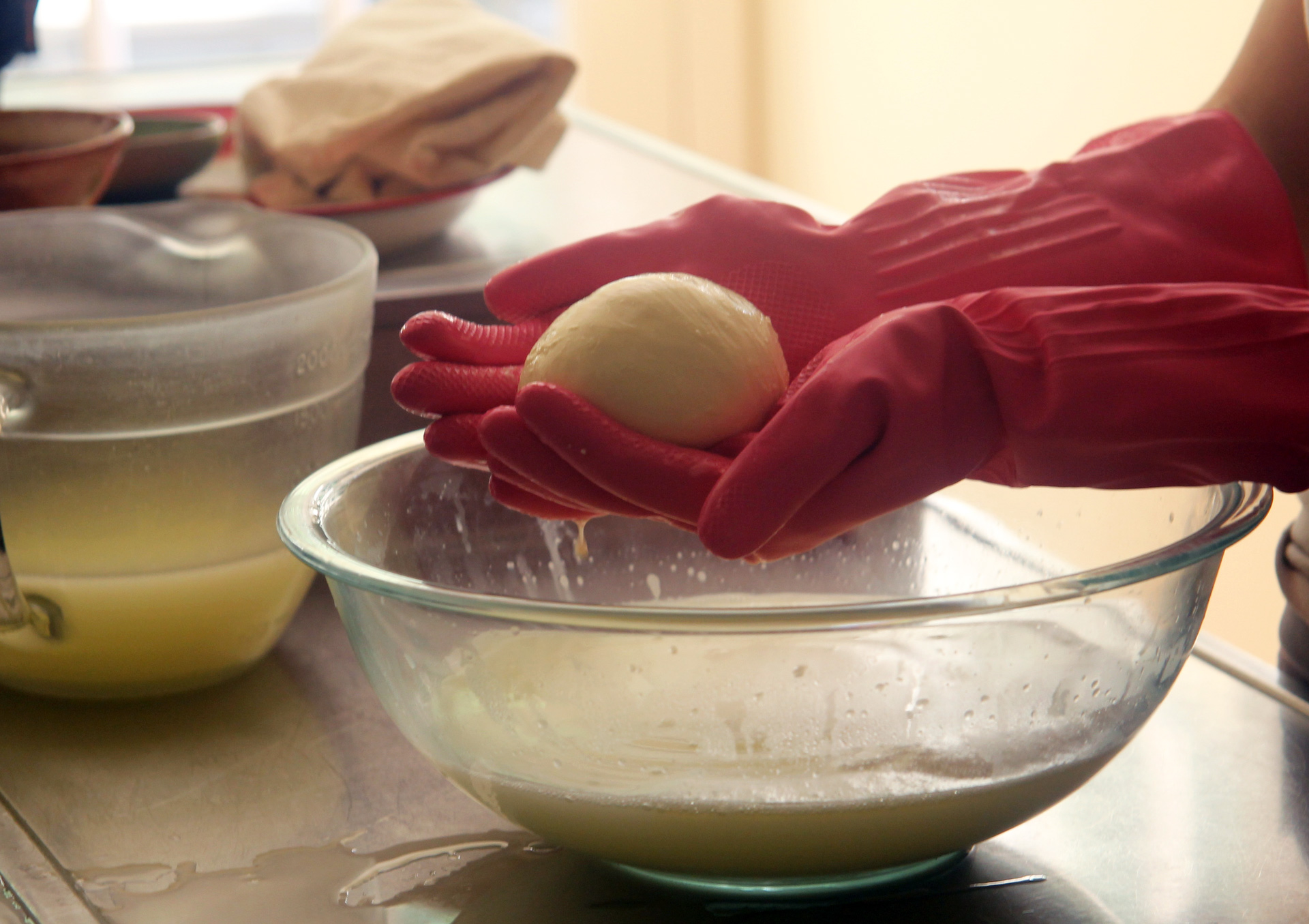
There was a time when I swore off making fresh mozzarella. In a previous job, I worked on developing a recipe for the stuff and things did not go smoothly. It took weeks and weeks of testing, and I was still unable to write a recipe that worked perfectly, each and every time. Other cheeses were easier to manage, but not mozzarella.
Why? It really comes down to the milk. More than any other fresh cheese, mozzarella is highly dependent on how and when milk was procured, pasteurized, and opened. Fresher milks curdle and stretch differently than those that have been on the shelf longer. Non-homogenized milks behave differently from homogenized. Depending on the temperature at which the milk was pasteurized, it may not form stretchable curds at all. Given all of these factors, plus regular human error, it is basically impossible to write a recipe for the absolute perfect mozzarella that works every time.
So what is this thing posted at the bottom of the page? It’s written as a recipe, but consider it a guide instead. If you make smart shopping decisions, you will almost certainly end up with mozzarella in the end. It may be the best mozzarella you’ve ever eaten, or it may not. How do you make great cheese? Practice. Try making mozzarella a couple of times a month. Try out different milks and slightly different temperatures. Practice your stretching techniques. You’ll wind up with lots of tasty snacks and, eventually, some of the best cheese ever.
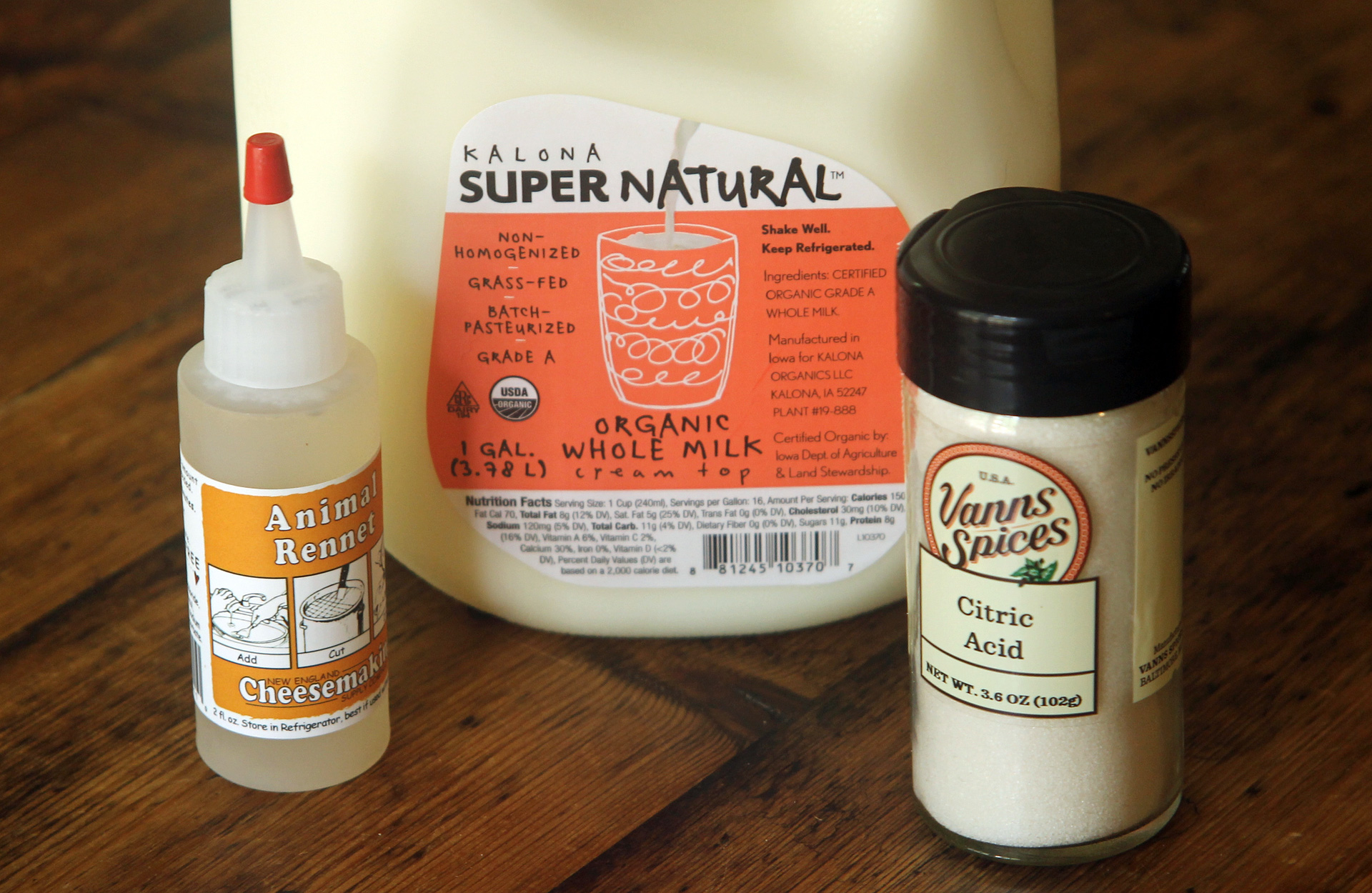
Some tips: It is absolutely critical that you purchase milk that has been pasteurized at temperatures below 170°F. Do not purchase milk that has been ultra-high-temperature pasteurized. Some milks labeled simply “pasteurized” will work, but others may not. Your best bet is to look for milks labeled “batch pasteurized” or “vat pasteurized.” The website New England Cheesemaking has a fairly comprehensive list of milks that should work and the stores where you can find them.
Purchase fresh liquid rennet and store it in the refrigerator. Don’t buy junket rennet. Both animal and vegan microbial rennets will work in this recipe. I’ve developed it using animal rennet, so if you choose to go the microbial route, you may need to fiddle with amounts. Check the label; it should tell you an approximate quantity to use.
